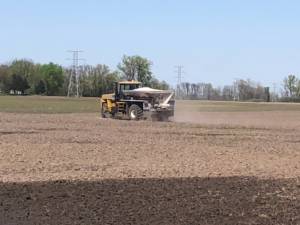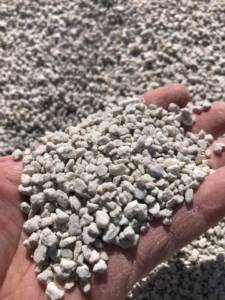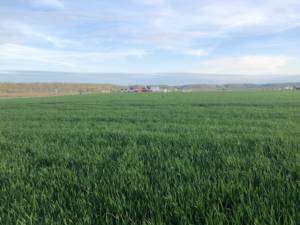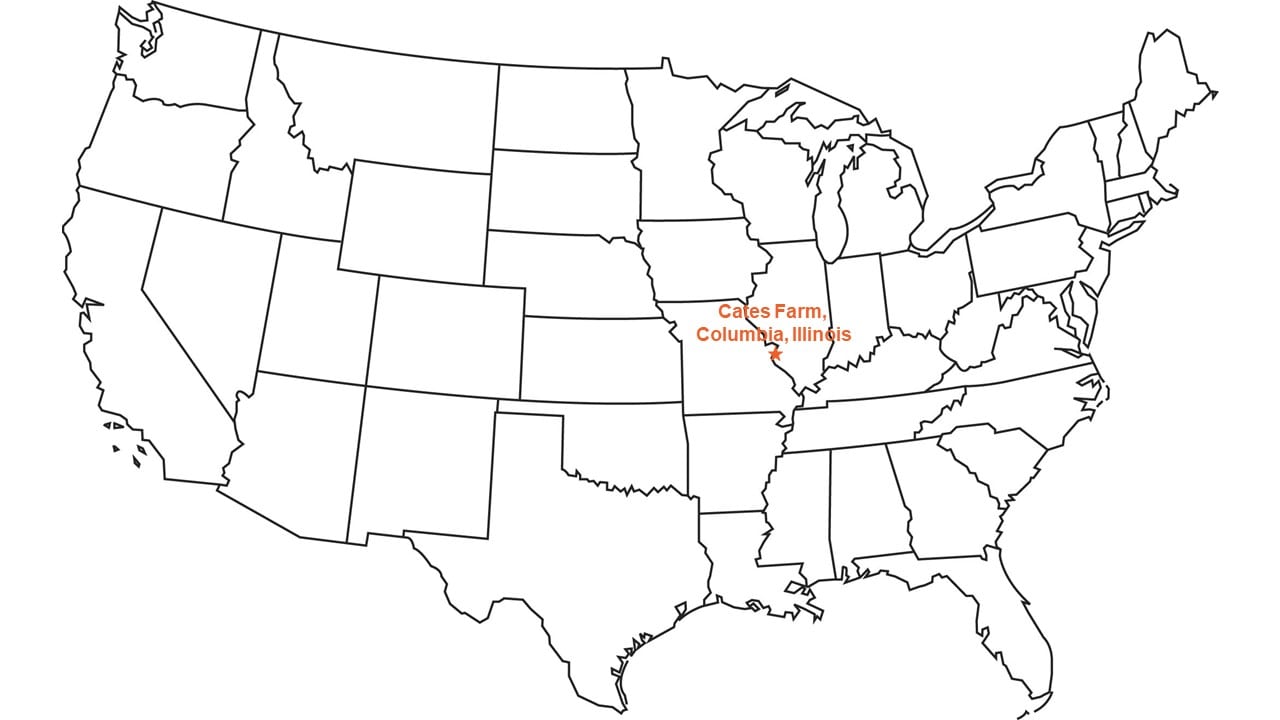Mid-April brought spring rains and below average temperatures to my area along the Mississippi River, in the heart of the United States midwest. The Mississippi River crested again in the middle of the month, just barely below flood stage.
Although the cool temperatures caused my fields to dry out slowly, I still started planting corn the first week of April. After planting our first field, we got another 4 centimeters, or 1.6 inches, of rain. But we now have a window of good weather, so we are making progress.
 My system for corn planting requires several steps. First, I spread dry fertilizer. Then, I apply pre-emergence herbicides that will prevent weeds from growing and provide residual weed control as the corn emerges. After that, I use a field cultivator to incorporate the fertilizer and herbicide into the soil to be sure it activates and is available to the plants. Finally, the corn is planted. My hired man and I do all of this as a two-man crew, and my fields are spread out over a 16- to 24-kilometers, or 10- to 15-mile, radius from the main farm. That means it takes us time to complete all the steps and move equipment between fields. But I expect that by the end of this week or early next week, most of my more than 280 hectares, or 700 acres, of corn will be planted.
My system for corn planting requires several steps. First, I spread dry fertilizer. Then, I apply pre-emergence herbicides that will prevent weeds from growing and provide residual weed control as the corn emerges. After that, I use a field cultivator to incorporate the fertilizer and herbicide into the soil to be sure it activates and is available to the plants. Finally, the corn is planted. My hired man and I do all of this as a two-man crew, and my fields are spread out over a 16- to 24-kilometers, or 10- to 15-mile, radius from the main farm. That means it takes us time to complete all the steps and move equipment between fields. But I expect that by the end of this week or early next week, most of my more than 280 hectares, or 700 acres, of corn will be planted.
Then, weather permitting, I will start planting soybeans next week, which is the last week of April. If it rains in this area, soybean planting will be pushed back to the beginning of May.
Because soil tests have shown a sulfur deficiency in my fields, I plan to spread dry ammonium sulfate fertilizer on about half of my soybean fields. Last year, I tested this practice in just one area, and it appeared to boost yields. This year, I am increasing the scale of this experiment, and I will be more intentional about leaving check strips in fields to see how soybeans respond to additional sulfur.
 For all the soybean fields, pre-emergence herbicide will be applied before planting. Again, I will use a field cultivator to incorporate the herbicide – and the fertilizer where it is applied – to be sure the soil moisture activates it and the nutrients are available. I try to plant soybeans within a day of incorporating inputs.
For all the soybean fields, pre-emergence herbicide will be applied before planting. Again, I will use a field cultivator to incorporate the herbicide – and the fertilizer where it is applied – to be sure the soil moisture activates it and the nutrients are available. I try to plant soybeans within a day of incorporating inputs.
My winter wheat is looking good. However, potential below-freezing temperatures one night this week could be hard on it. All the nitrogen fertilizer it needs has been applied, and it is growing well. I also have applied the herbicides it needs to control weeds like garlic and marestail, which are problems in this area. The herbicide that controls marestail has enough residual that it will protect the double-crop soybeans that will be planted after wheat harvest. It will be a few weeks before the wheat reaches flag-leaf stage and then the heads start emerging. When the wheat pollinates next month, I will decide whether or not to apply fungicide to protect it from head scab, a disease that hurts crop quality and yield. In one field, I am aiming for well above-average yields, about 6.8 metric tons per hectare, or 100 bushels per acre. To manage for such high yields, I split fertilizer applications and used a different type of equipment to apply the fertilizer to eliminate damage from those applications. It appears to be on-track for harvest in mid-June, when I will find out if this and other practices improved yields.
 When it rains, I have continued to deliver delivering corn to the river terminal just 8 km, or 5 miles, away. I also have about 43.5 metric tons, or 1,600 bushels, of soybeans from last year yet to sell and deliver.
When it rains, I have continued to deliver delivering corn to the river terminal just 8 km, or 5 miles, away. I also have about 43.5 metric tons, or 1,600 bushels, of soybeans from last year yet to sell and deliver.
Right now, I want to spend as much time as possible in a tractor cab, getting my 2021 crop planted and off to a strong start.

